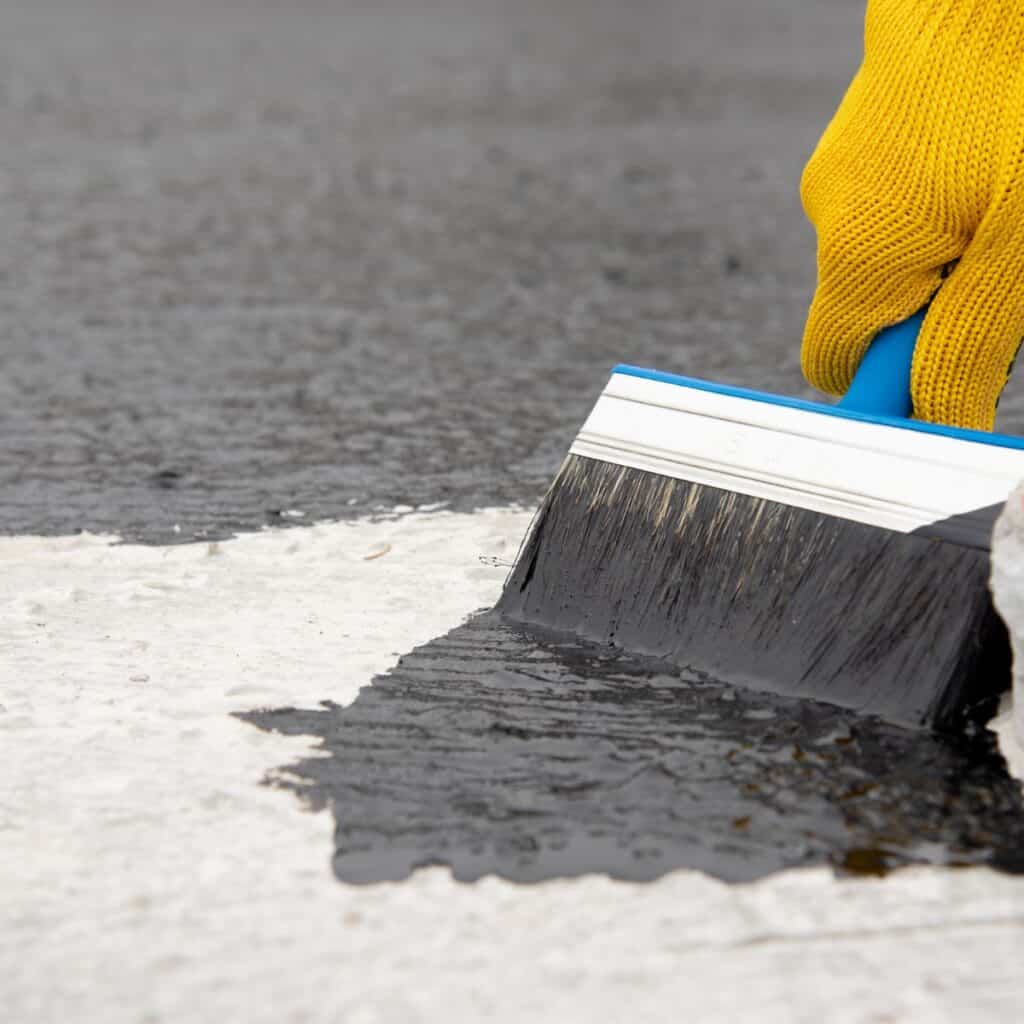A coating is a קאַווערינג that is applied to the surface of an object, usually referred to as the substrate. The purpose of applying the coating may be decorative, functional, or both.
The coating itself may be an all-over coating, completely covering the substrate, or it may only cover parts of the substrate.
Paints and lacquers are coatings that mostly have dual uses of protecting the substrate and being decorative, although some artists paints are only for decoration, and the paint on large industrial pipes is presumably only for the function of preventing corrosion.
Functional coatings may be applied to change the surface properties of the substrate, such as adhesion, wetability, corrosion resistance, or wear resistance. In other cases, e.g. semiconductor device fabrication (where the substrate is a wafer), the coating adds a completely new property such as a magnetic response or electrical conductivity and forms an essential part of the finished product.

Coating protects against moisture problems
A coating fights rising damp and prevents you from moisture penetration.
I always find it annoying when I see a wet wall.
I always want to know where that moisture comes from.
You can then search everywhere, but it is really difficult to trace exactly where the cause is.
It could be for various reasons.
There may be a leak somewhere in the wall or a סילאַנט edge is loose.
You can then solve these two causes yourself.
After all, there is also a lot of moisture in your house: breathing, cooking, showering and so on.
This has to do with the humidity in your home.
What we are talking about now is often the stretching damp.
I also wrote an article about this: rising damp.
I have a tip for you to find out the cause of wet spots on your inner wall.
You drill a hole of approximately 4 mm in a wall and you are going to check the drill dust.
Is your drilling dust wet, which indicates rising damp or leakage damp.
If the drilling dust is dry, this is condensation which does not penetrate.
A coating prevents and protects this moisture problem.
Coating for interior wall and basement.
Among other things, Bison has a coating for your inner wall and for your basement.
I have also worked with it several times and it is good.
The bison coating combats rising damp, just like a rubber coating, for example.
This product prevents the wall from getting wet again, while still allowing it to breathe.
After all, it is important that you can get moisture out.
This coating also offers a solution for moisture penetration, mold spots and saltpeter rash on your inner wall and basement walls.
You can also apply it on your walls of your kitchen, bathroom, bedroom and so on.
In fact on all your interior walls.
Another good feature is that you can simply paint it over later.
איך בין Joost Nusselder, דער גרינדער פון מכשירים דאָקטאָר, אינהאַלט מאַרקעטער און טאַטע. איך האָב ליב צו פּרובירן נייַע ויסריכט, און צוזאַמען מיט מיין מאַנשאַפֿט איך האָבן קריייטינג אין-טיפקייַט בלאָג אַרטיקלען זינט 2016 צו העלפֿן געטרייַ לייענער מיט מכשירים און קראַפטינג עצות.

